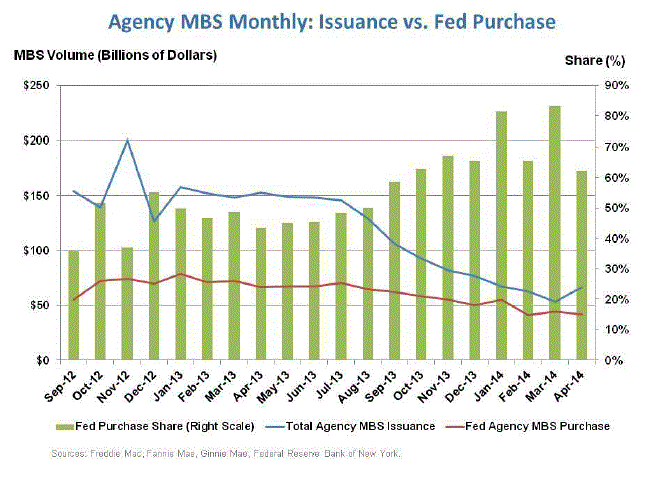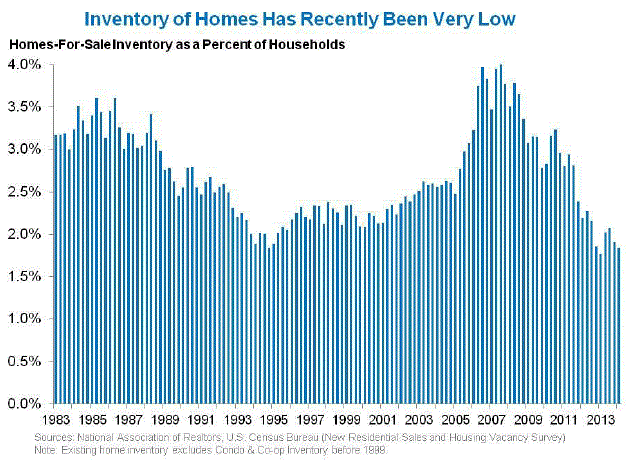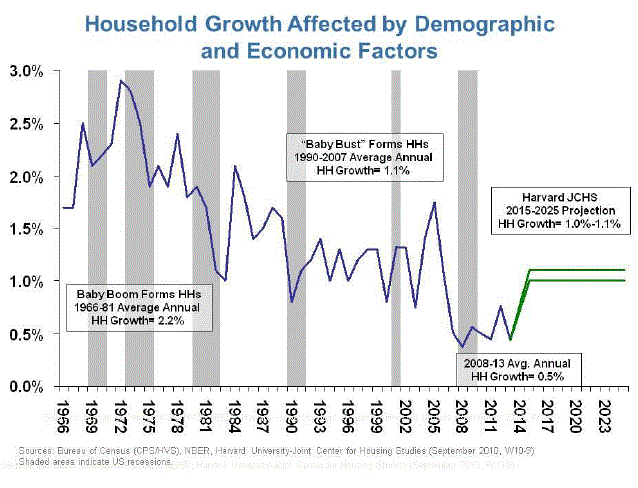Blog

Housing Supply, Demand Breaking Rules Freddie Mac Says
FreddiernMac’s economists used this month’s Economic and Housing Market Outlook to lookrnat three areas of supply and demand. rnAnalyzing each, they say, will help us understand the direction in whichrnwe are moving and each is critical to keeping the housing recovery not justrngoing but growing. And in each of thesernfundamental areas, mortgage rates, home sales, and household formations, whatrnwe expect to be happening, isn’t.</p
FrankrnNothaft, chief economist, and deputy chief Leonard Kiefer point out that overrnthe past five months the Federal Reserve has gradually tapered the growth ofrnits holdings of mortgage-backed securities (MBS) that it acquired through threernrounds of quantitative easing. For Mayrn2014 the Fed planned to hold growth in its holdings to $20 billion, one-half ofrnwhat the monthly pace had been from the start of the third round (Septemberrn2012) through the end of 2013. </p
Despiternthis curtailment, mortgage rates have largely held steady with fixed-rates evenrndipping in early May to levels last seen in November. This happened because the Fed tapering hasrncoincided with a sharp reduction in mortgage originations and thus new MBSrnissuances. In fact, the ratio of the Fed’srnMBS acquisitions to new issuances is slightly higher than a year ago. In other words, the Fed’s ‘demand’ for new MBS has declined less than has new ‘supply’. This is one reason the primary market is currentlyrnenjoying lower than expected mortgage rates. New MBS will continue to run below that ofrnlast year because of the sharp decline in refinancing which is down from aboutrn80 percent of the dollar volume of mortgages in January 2013 to 43 percent lastrnmonth and is expected to decline further. rnFreddie Mac’s economists expect to see the 30-year fixed-rate mortgage gradually rise to around 4.6 percentrnby the end of the year as the Fed continuesrnto ‘taper’ and ultimately reduces its share of new MBSrnissuance.</p
 </p
</p
Home sales arernalso contrarian. Even as sales have declined, prices have continued to rise.rn Many real estate agents are reportingrnrelatively low inventories of homes for sale and even with fewer of themrnselling, the inventory remained at only a 5.2 month supply in March and whenrnnew homes are included in the count, the total number of homes for salernrelative to the number of households in the U.S. has been running at the lowestrnlevel in more than 30 years. This lowrninventory reflects several features of the market. First, many homeowners are underwater andrnreluctant to sell, especially since Congress has allowed the MortgagernForgiveness Debt Relief Act to expire making them libel for taxes on anyrnforgiven debt in a short sale. Second, thernmajority of homeowners with a mortgage either bought or refinanced during thernlast few years and have such low interest rates they may be reluctant to sellrnand rebuy in a higher rate market. Third, while it varies by location, REOrnsales have slowed considerably over the past couple of years. </p
 </p
</p
A declinernin the number of homes offered for sale at each price point over the past year is consistent with the trend in the number of sales and in house prices: A supply-constrained market (holding other factors constant) will result in a declinernin the volume of sales and an increasernin real transaction prices (that is, house prices rising faster than inflation for all other goods).rnThus, even though existing home sales are down 6.3rnpercent during the first quarterrnof 2014 compared with a year ago, house prices are up 8 percent in the Freddie Mac HousernPrice Index, and even more inrnsome other pricernmeasures.</p
While housing starts are up substantially from their 2009 trough they are still at depressed levels and one factor constraining new construction has been the “lackluster” rate of household formations which have averaged barely better 500,000 each year since the Great Recession, half of the pace in the previous decade. Harvard’s Joint Center for Housing Studies is projecting an average of 1.2 to 1.3 million per year over the 2015 to 2025 decade. Household formations are traditionally the largest driver of the demand for new housing; thus, when demand is weak, net new supply will be reduced as well.</p
 </p
</p
Two principalrnforces affect household formation, demographics and the business cycle. The demographic component is currentlyrnfavorable – the number of live births in the U.S. began to increase around 1990rnand peaked in 2007 so a rising number of young households should be arriving inrnthe housing market. However thernprotracted weak labor market has meant that many adults have continued to livernwith relatives or have returned to school. rnMany have also accrued considerable student debt in the process. </p
Therneconomists say that a pickup in householdrnformations will require stronger jobrngrowth. “We understand that we might sound like a brokenrnrecord here, but the need tornhave a job before buying a house is a simple fact of life.” April’s job report was encouraging, with 288,000 jobs added to the economy and Nothaft and Kiefer project economic growth accelerating to about a 3.0 percent annualized rate in the final three quartersrnof 2014. “If we reach that level it should generaternbetween 200,000 and 250,000 jobs per month,rnand with that an increasernin net household formations and new housing starts-or in other words,rnadditional housing supply. If we get that, we’ll be able to address the underlying ‘supply’ problem because we know the ‘demand’ for housing is there.
All Content Copyright © 2003 – 2009 Brown House Media, Inc. All Rights Reserved.nReproduction in any form without permission of MortgageNewsDaily.com is prohibited.
Latest Articles
By John Gittelsohn August 24, 2020, 4:00 AM PDT Some of the largest real estate investors are walking away from Read More...
Late-Stage Delinquencies are SurgingAug 21 2020, 11:59AM Like the report from Black Knight earlier today, the second quarter National Delinquency Survey from the Read More...
Published by the Federal Reserve Bank of San FranciscoIt was recently published by the Federal Reserve Bank of San Francisco, which is about as official as you can Read More...

Comments
Leave a Comment